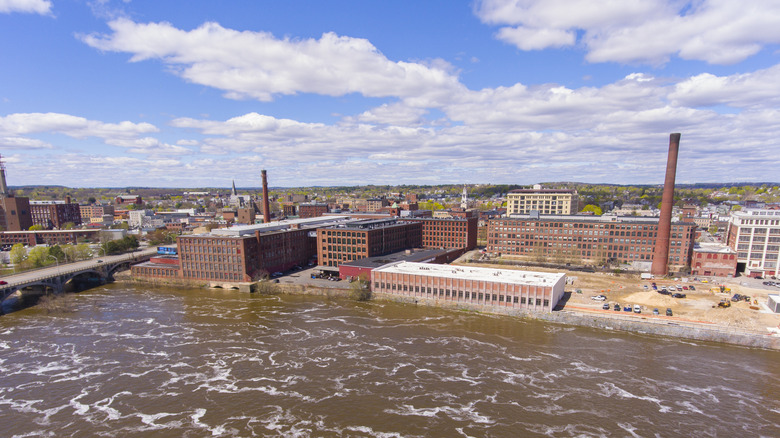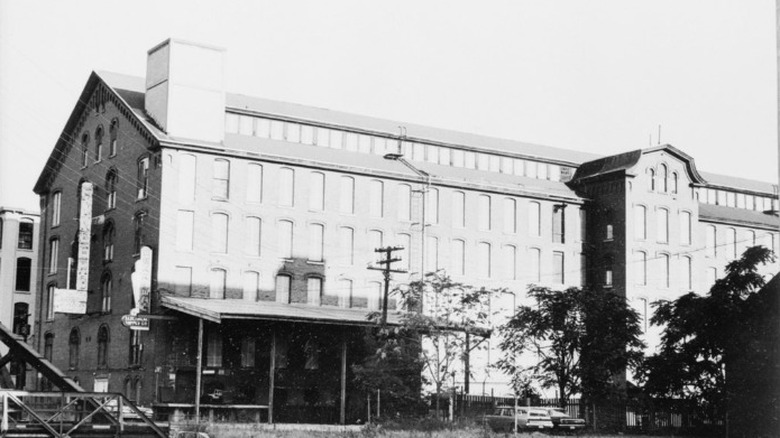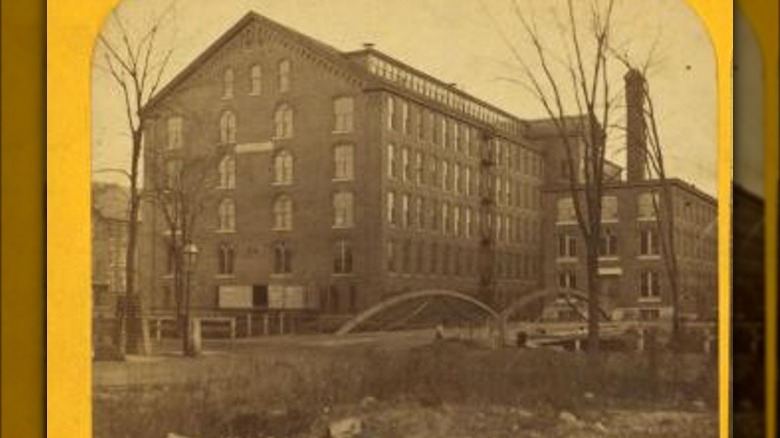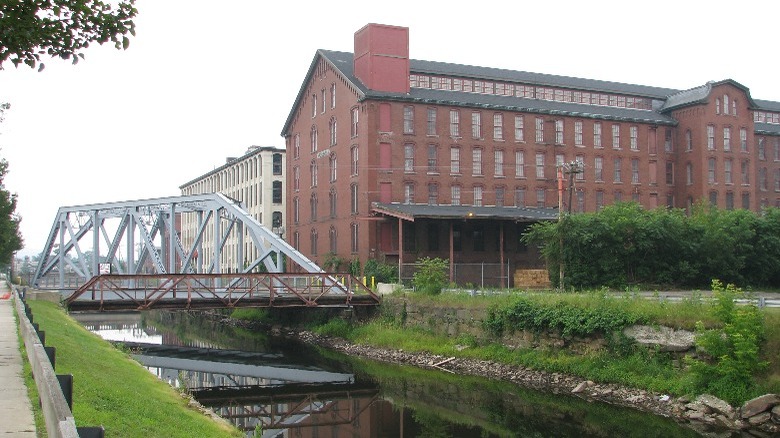The Pemberton Mill Disaster Explained
On January 10th, 1860, textile workers were laboring away at Pemberton Mill like any other typical work day, but something was off that night. The workers kept hearing rattling in the walls of the building, only for there to be a sudden crash as the foundation caved in on the workers, and the upper floors of the building collapsed, causing machinery and people to tumble to the bottom floors. This caused the deaths of somewhere between 90 and 145 people while injuring another 166. It was described as the worst manufacturing disaster in Massachusetts history and one of several similar events throughout the Industrial Revolution (via New England Historical Society).
Approximately 800 workers were inside the building at the time of the collapse, and most of them were immigrant women and children who were mostly from Ireland. According to the New England Historical Society, they immigrated to the United States during the Irish potato famine. Other immigrants came from Germany, and Switzerland, but many other workers were from New Hampshire and Maine.
Origins of the mill
The building was funded by John Lowell and his brother-in-law, J. Pickering Putnam, and cost $850,000 to build. For context, that amount is worth $33,000,000 today (via Inflation Calculator). Pemberton Mill was constructed by the Essex Company, which was headed by the well-esteemed engineer Captain Charles Bigelow, who had previously built a dam, a machine shop, and other mills, according to the New England Historical Society.
In 1857, there was a financial panic in the market. After the Ohio Life and Trust Company went bankrupt, which caused speculation of a market crash. As a result, banks and investors began selling their assets, preparing for the dip (via The Economic Historian). The panic of 1857 caused Lowell and Putnam to sell their mill to George Howe and Devin Nevins for $500,000. However, these new owners of Pemberton Mill tried to push the building to its absolute limit, and they started overloading it with new equipment (via the New England Historical Society).
Burst into flames
To make matters worse for the workers inside, five hours after the initial collapse, a rescue team went into the rubble, and a kerosene lamp fell out of a person's hand. The foundation, which was comprised of wood and cotton, was covered with flammable material from the machines, which broke after the collapse, causing the building to burst up into flames, according to The Eagle-Tribune.
There were 14 people who burned to death, screaming as the fire encroached closer and closer to them, only to be heard by rescuers who came to help the people inside the building, according to the New England Historical Society. After the catastrophic event, bodies were brought to Lawrence City Hall so people could attempt to distinguish who was who. However, the bodies were almost unrecognizable after the fire, which made it difficult for families to identify their relatives (via the New England Historical Society).
Who was responsible?
After the collapse of Pemberton Mill, philanthropists were keen on providing relief for the citizens of Lawrence, giving the city $66,000. In today's money, that's worth $2,310,000, according to the Inflation Calculator. Meanwhile, many in the city wanted someone to blame, and they wanted to know how something like this could happen in the first place. Captain Charles Bigelow, the man who built the building, was deemed responsible for the collapse, and a jury found him guilty of shoddy infrastructure, according to the New England Historical Society.
Eventually, a new Pemberton Mill was constructed atop the rubble of the disaster and remained in operation as a textile plant until 1938. As of 2017, the mill was owned by data storage company Iron Mountain. Today, the disaster serves as a reminder to the citizens of Lawrence, Mass., what their forefathers endured as a result of faulty construction as they continue to make safer buildings in the future (via The Eagle-Tribune).



